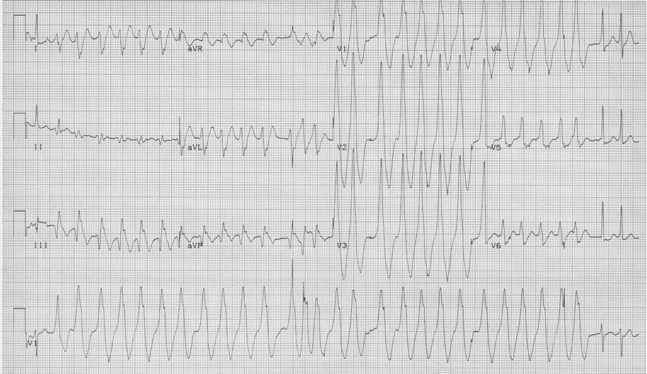
36-year-old man complains of palpitations and lightheadedness.
Answer & Explanation
The strip reveals a very rapid (at times approaching a heart rate of 300/minute) and irregularly irregular rhythm with a wide-complex QRS. You must assume that this represents atrial fibrillation conducting through a bypass tract. This is a potentially dangerous situation because rates that approach 300/minute can quickly degenerate to ventricular fibrillation. Additionally, treatment of this rhythm can worsen the ventricular rate by increasing conduction down the bypass tract. Avoid ABCD – adenosine, ß-blockers, calcium-channel blockers, and digoxin. Appropriate treatment includes procainamide and electrical cardioversion. Treatment with amiodarone is effective but controversial as amiodarone has a complex mechanism including actions which block the AV node and have been reported to cause deterioration of bypass atrial fibrillation. It was once recommended by ACLS, but was removed in the 2010 guidelines.
After cardioversion to sinus rhythm the patient’s rhythm strip clearly reveals signs of WPW (short PR interval, prolonged QRS, and a delta wave).

This patient went on to have bypass tract ablation so he wouldn’t have to experience something like this episode again. Note that the signs of WPW are now absent from the EKG.
